Appearance
Dark Light
Did You Know?
Conventional farmers use around 300 different pesticides to grow foods that are sold in supermarkets everyday.

Urban Gardening - 2020
Most people will remember 2020 as the year of the COVID-19 pandemic. When the coronavirus crisis began, I didn't expect it to affect our daily lives as much as it did. As a measure to slow the spread of the virus, my city (Toronto) closed most public facilities, including: restaurants, schools and park amenities -- this included my allotment garden plot. The allotment garden did eventually re-open in mid May. Gardening provides normalcy in challenging times like these; I've always found it comforting to see a field of green emerge from the cold and barren soil in spring.
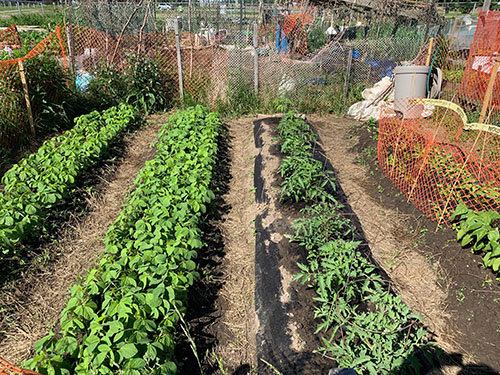
I experimented with growing tomatoes on a bed covered by weed barrier fabric (the third row in the picture above). The fabric was laid over a raised bed and the tomato plants were grown in square-foot-sized holes that were cut into the fabric. It didn't really affect the yield (quantity and size of the tomatoes). Pros: A lot less weeding to do and it made the soil bed look tidier. Cons: Harder to apply fertilizer and water the plants, since the fabric wasn't water permeable.
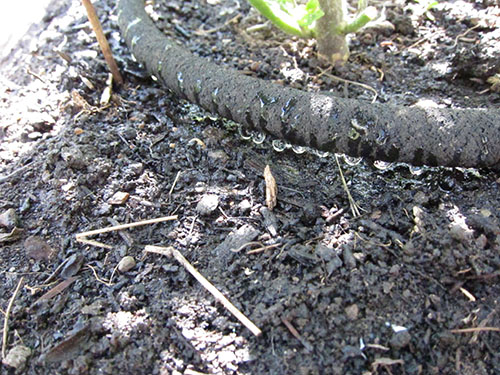
Also experimented with soaker hoses/drip irrigation. My cousin got me these 15' long soaker hoses from Dollarama (I think they were $4 each). You can chain them together into one long hose or use them separately. I ended up chaining 3 hoses together and connecting them to my garden hose using a Y-adapter. I got these hoses mid-season and it was tricky getting them secured near the base of the plants under all the foliage. If I am going to use them again next year, I'll probably install them when the plants are at the seedling stage. I think they save water because the water goes directly to the base of the plants where the roots are and there's less surface run-off. However, the drip was uneven - some patches of ground were getting over-watered and some remained dry. I think commercial-grade soaker hoses are pretty expensive and I wasn't expecting the Dollarama hoses to perform perfectly -- they did provide a chance to get some hands-on experience and determine whether it's worth making a larger investment in better quality hoses.
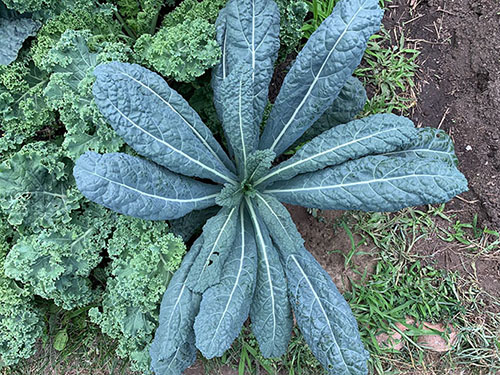
I like kale (not lying) and tried growing a variety called Lacinato this year. They can grow pretty tall, some as tall as 3-4 ft. The leaves have a bumpy & waxy texture, and its taste is milder and less kale-y than the curly kale. I think I still prefer the taste of Red Russian kale, but in terms of yield, lacinato wins hands down. Once they get going in late summer, 3 or 4 plants should suffice for an average size family.
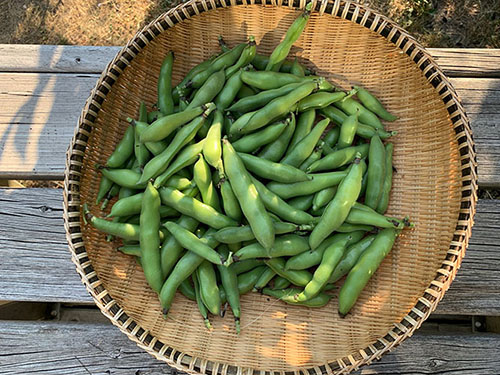
Grew a lot more broad beans this year. They're fun to grow and harvest but they take a bit of work to cook and extract the beans (they're double-podded; there's the outer pod, then there's a layer of skin that you have to remove from the bean). It's totally worth it, though, because the beans are delicious when fresh, and I tend to cook/eat them within an hour or two of picking them. You can't get this flavour with store-bought broad beans.
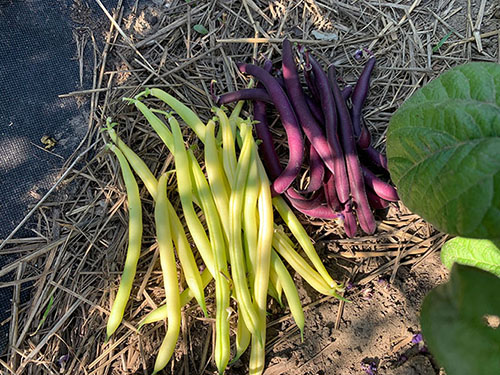
Yellow and purple bush beans. The purple ones turn green when cooked. I get a glut of these but luckily they freeze really well.
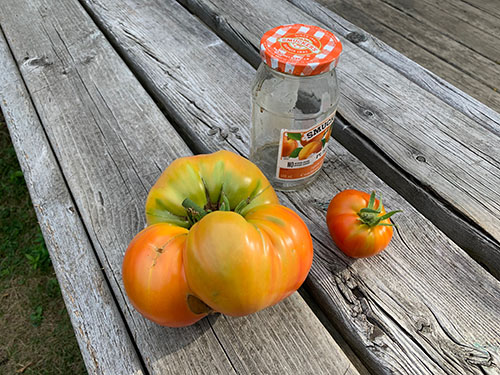
I think this was the largest/heaviest tomato I've grown -- 2 lbs! This was a new variety for me, called Gold Medal. It has nice yellow flesh streaked with orange and red. Very good, sweet tasting tomato.
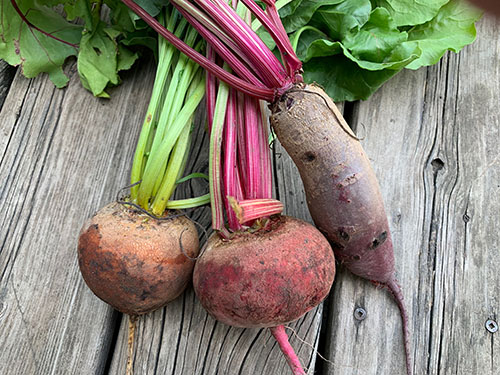
Golden, Chioggia & Cylinda beets. I didn't actually grow the cylindra beet - I traded a Chioggia beet for it with someone at the allotment garden. The cylindra beet had a nice mild sweet flavor and the greens were really good, too. I think I might try growing some next year.
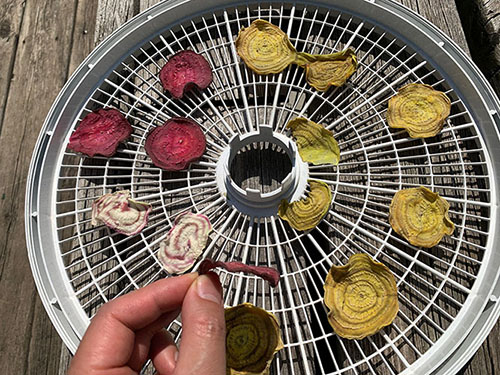
I love beets and I'm always trying to find new ways to cook & eat them. Tried making dehydrated beet chips. I thought they would become crispy but they ended up more like dried fruit leather. They were okay as a snack, but I probably wouldn't make them again given the required time and effort.
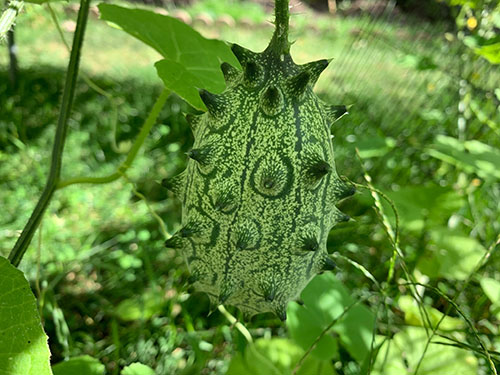
Every year I try to grow a couple of new veggies/herbs that I've never grown before. Saw the jelly melon (also known as kiwano ) in a seed catalogue and it looked really interesting, so I decided to give it a shot. This fruit looks as if it's from a different planet. The vine spreads like crazy; there are tons of side shoots. The fruit is covered with sharp spikes/spines so wear gloves when handling them.
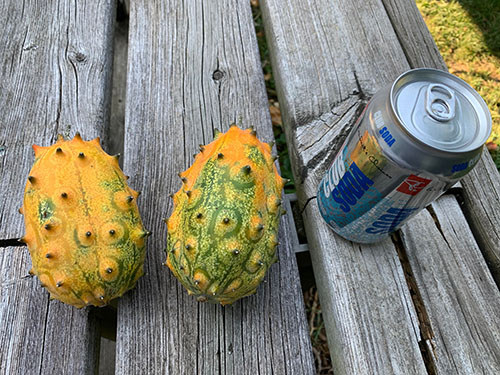
The fruit turns dark yellow/orange when ripe.
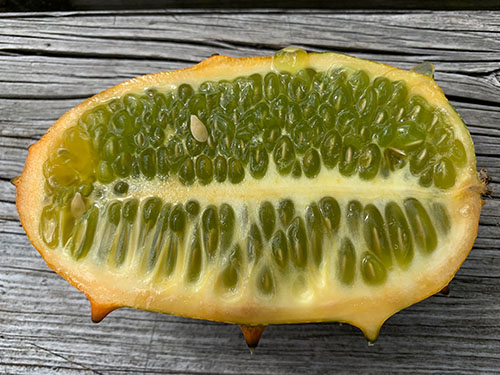
It's filled with soft, white seeds (similar to unripe watermelon seeds).
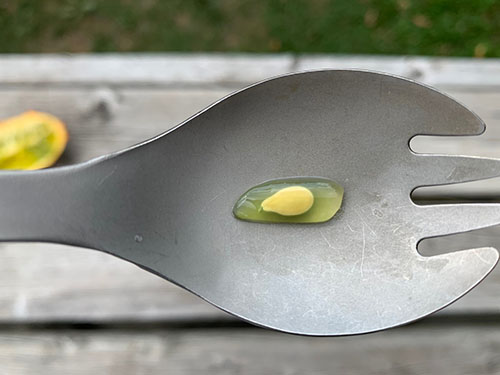
Each seed is encased in a sac of green jelly (I guess hence the name). The taste & texture are pretty unique -- it's like eating lime & cucumber flavoured Jell-O, with seeds.
